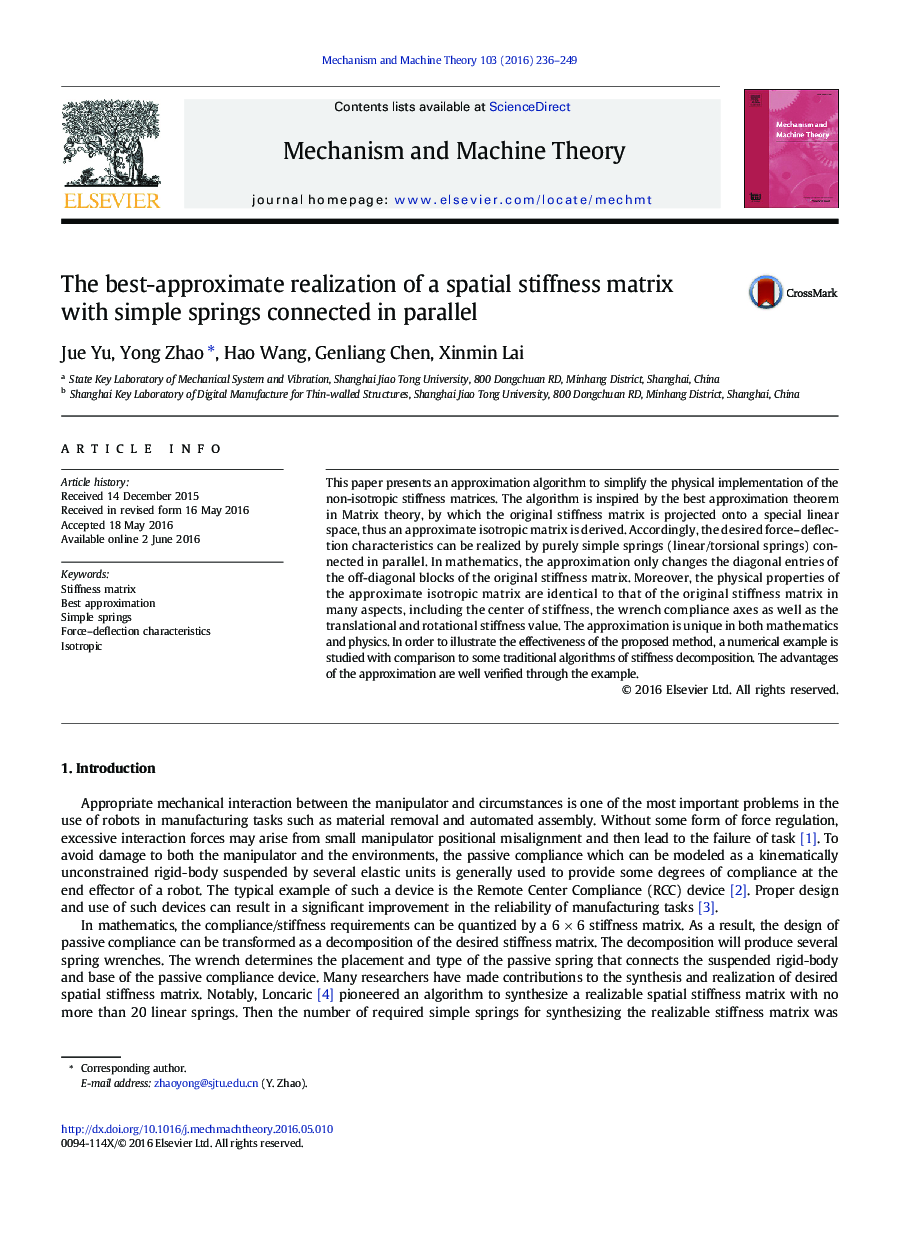| Article ID | Journal | Published Year | Pages | File Type |
|---|---|---|---|---|
| 804465 | Mechanism and Machine Theory | 2016 | 14 Pages |
•An algorithm turning the non-isotropic stiffness matrix into an isotropic approximate matrix.•The physical implementation of stiffness requirements are simplified by eliminating screw springs.•The force–deflection characteristics of original stiffness matrix are preserved in many aspects.
This paper presents an approximation algorithm to simplify the physical implementation of the non-isotropic stiffness matrices. The algorithm is inspired by the best approximation theorem in Matrix theory, by which the original stiffness matrix is projected onto a special linear space, thus an approximate isotropic matrix is derived. Accordingly, the desired force–deflection characteristics can be realized by purely simple springs (linear/torsional springs) connected in parallel. In mathematics, the approximation only changes the diagonal entries of the off-diagonal blocks of the original stiffness matrix. Moreover, the physical properties of the approximate isotropic matrix are identical to that of the original stiffness matrix in many aspects, including the center of stiffness, the wrench compliance axes as well as the translational and rotational stiffness value. The approximation is unique in both mathematics and physics. In order to illustrate the effectiveness of the proposed method, a numerical example is studied with comparison to some traditional algorithms of stiffness decomposition. The advantages of the approximation are well verified through the example.
